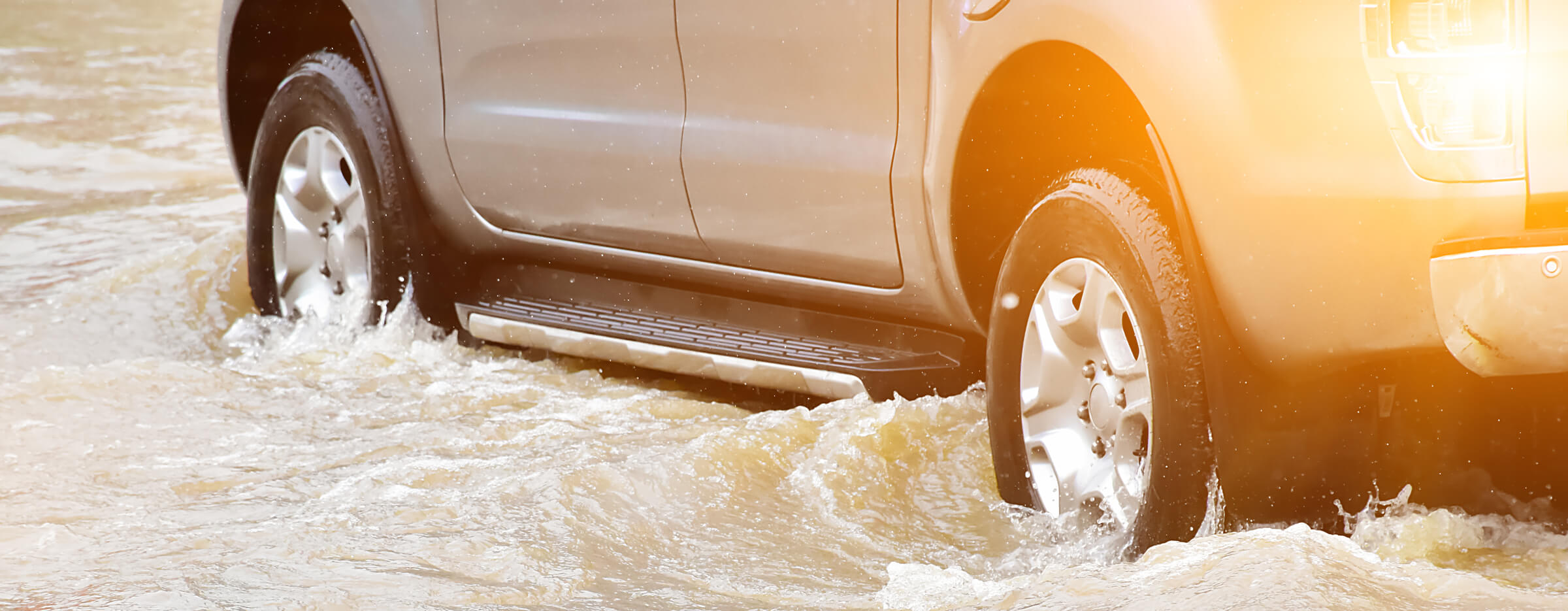
How to Prep Your Car for a Natural Disaster (And What Insurance Actually Covers)

by Erin Anderson
Natural disasters can hit with little warning — and when they do, your car can be one of the most vulnerable things you own. Whether it's a hurricane, wildfire, flood, or hailstorm, the damage can be severe, and the insurance coverage... confusing.
The good news? A little planning goes a long way. Here's how to prep your car before a natural disaster strikes — and what your insurance will (and won't) actually cover.
Prep Your Car Before the Storm
You don't have to overhaul your garage to protect your vehicle — just focus on the basics:
- Fill your gas tank. If you need to evacuate, you don't want to get stuck in long lines or run out during heavy traffic.
- Park smart. If possible, move your car into a garage or under a carport. If that's not an option, park away from trees, power lines, or flood-prone areas.
- Seal windows and sunroofs. Make sure everything is fully closed to protect your interior from water damage.
- Take photos. Snap quick shots of your car from all sides. If you need to file a claim later, this documentation can help speed things up.
- Remove valuables. Keep your glove box, trunk, and cabin clear of anything important or expensive.
Understand What Your Insurance Covers
When it comes to disaster-related damage, your coverage depends on the type of policy you have:
- Comprehensive coverage is what protects your car from most natural disasters, including hail, fire, flooding, falling objects, and wind damage.
- Liability-only policies don't cover damage to your own vehicle — even if it's totaled by a tree or swept away in a flood.
- Flooding and hurricanes are not automatically covered under basic policies. If you live in a high-risk area, double-check that your comprehensive coverage is up to date.
- Aftermarket additions (like custom rims, paint, or stereo systems) may not be fully covered unless you've declared them on your policy.
What to Do If Your Car Is Damaged
If your vehicle takes a hit from a storm, follow these steps:
- Stay safe and don't try to move or start the car if there's standing water or visible damage.
- Document everything. Take photos or videos of the damage before moving or cleaning anything.
- Contact your insurer quickly. Some companies have tighter timelines for storm-related claims.
- Avoid further damage. If possible, cover broken windows or exposed areas to prevent water from getting inside — your policy may not cover damage that occurs after the storm if you didn't take basic precautions.
The Bottom Line
Natural disasters are unpredictable — but your response doesn't have to be. With a few simple steps, you can help protect your car and make any claims process smoother.
And if you're not sure whether your current policy has you covered, now's a smart time to review your options. Comparing quotes can reveal better coverage or lower rates — especially if you live in an area where extreme weather is becoming more common.